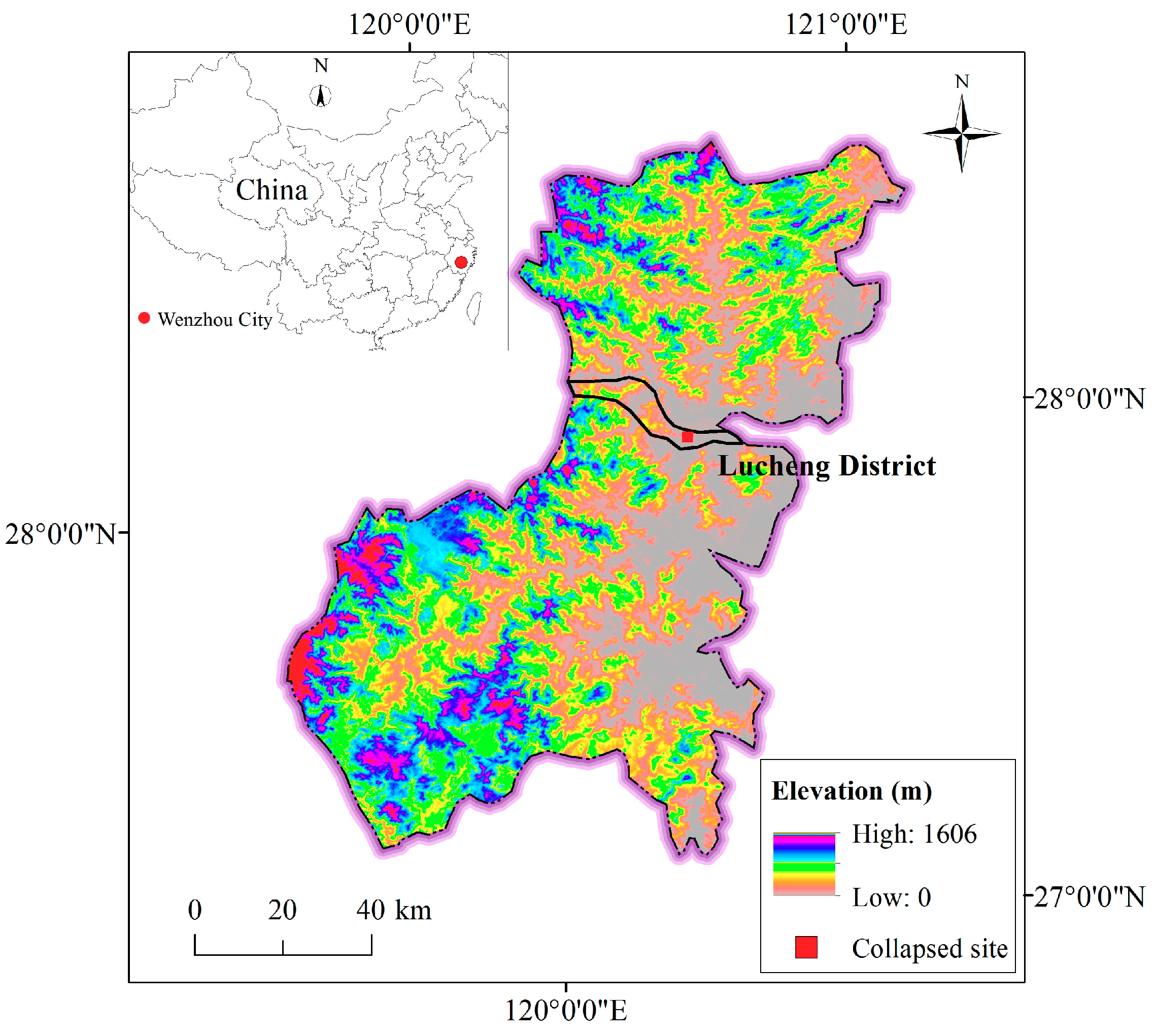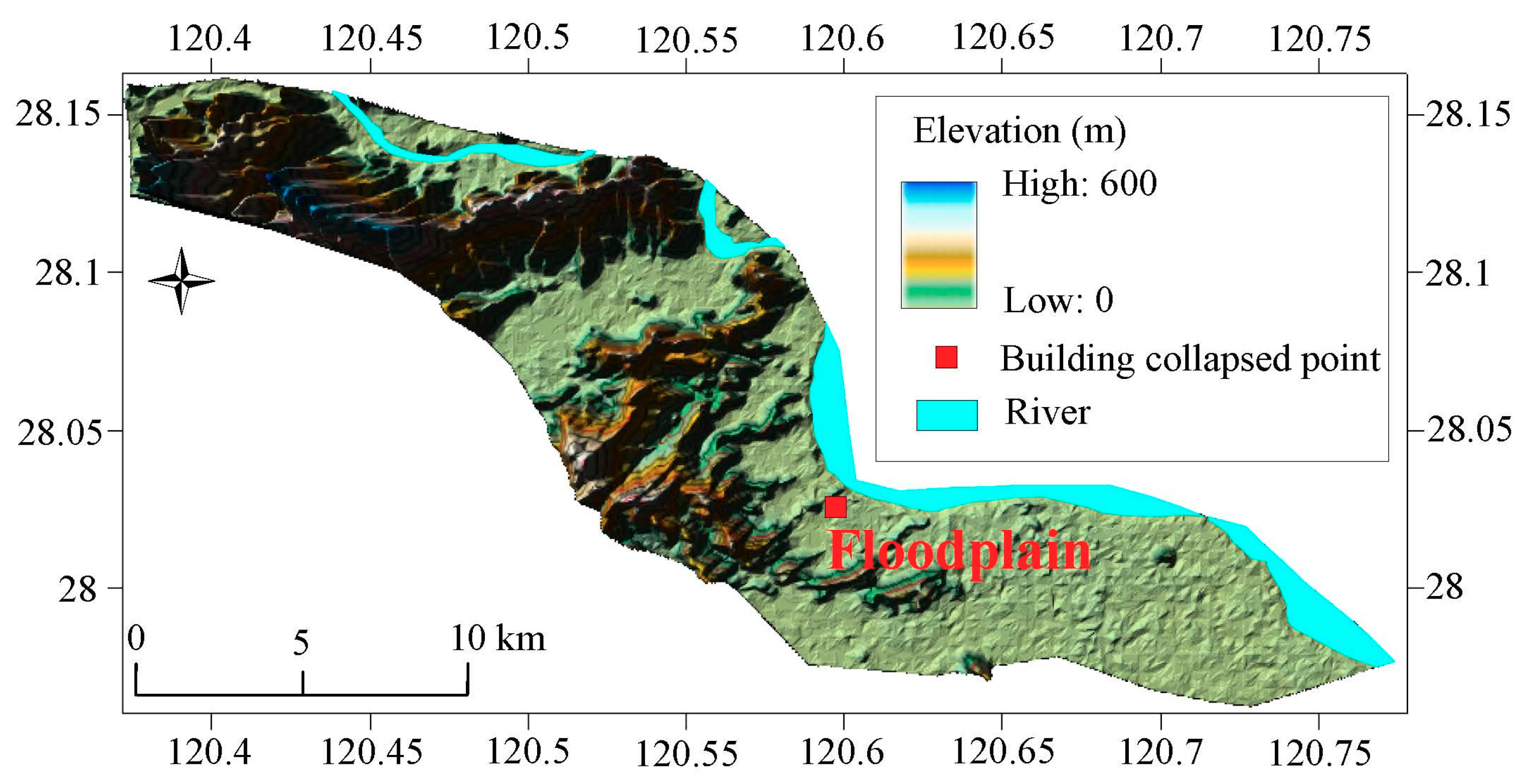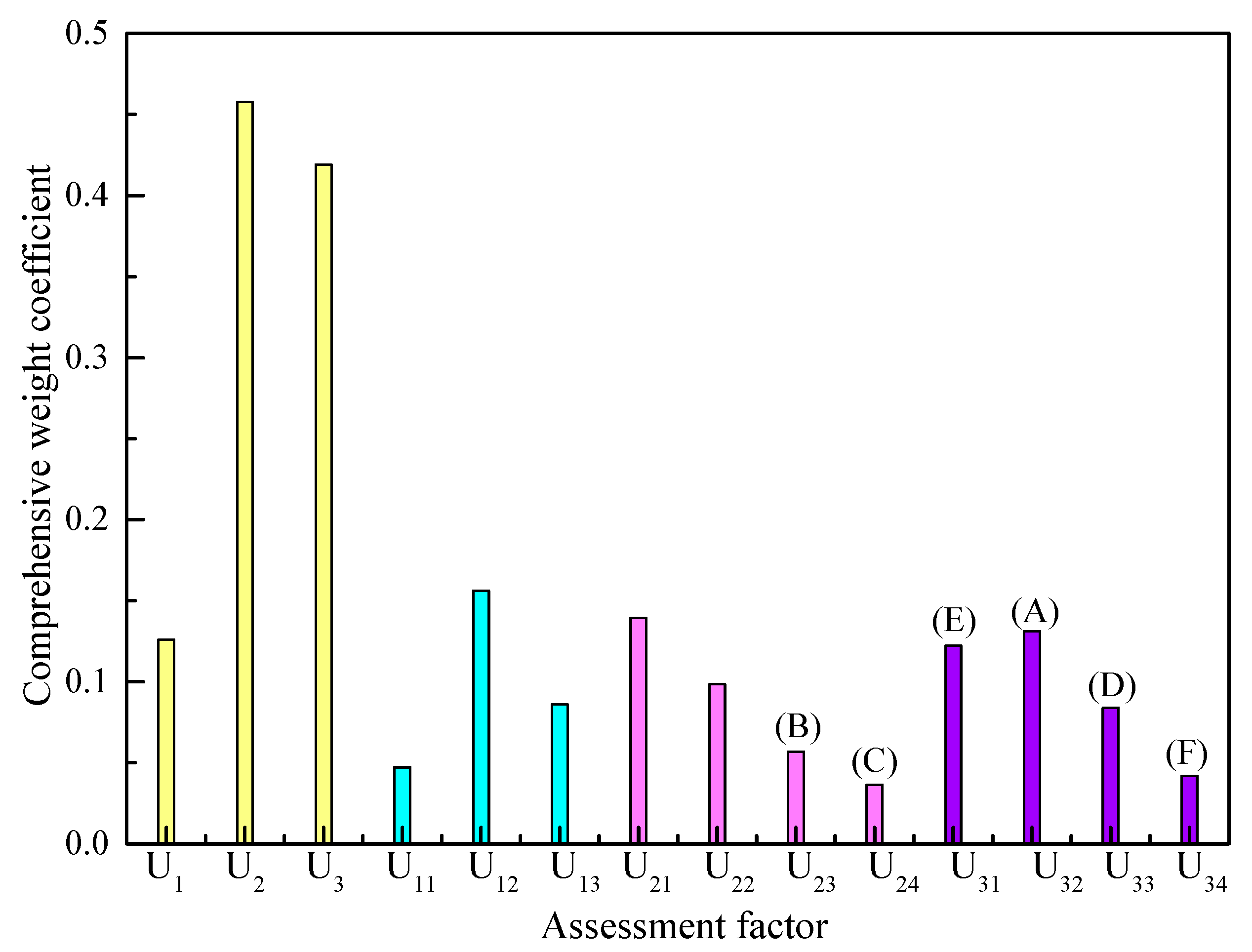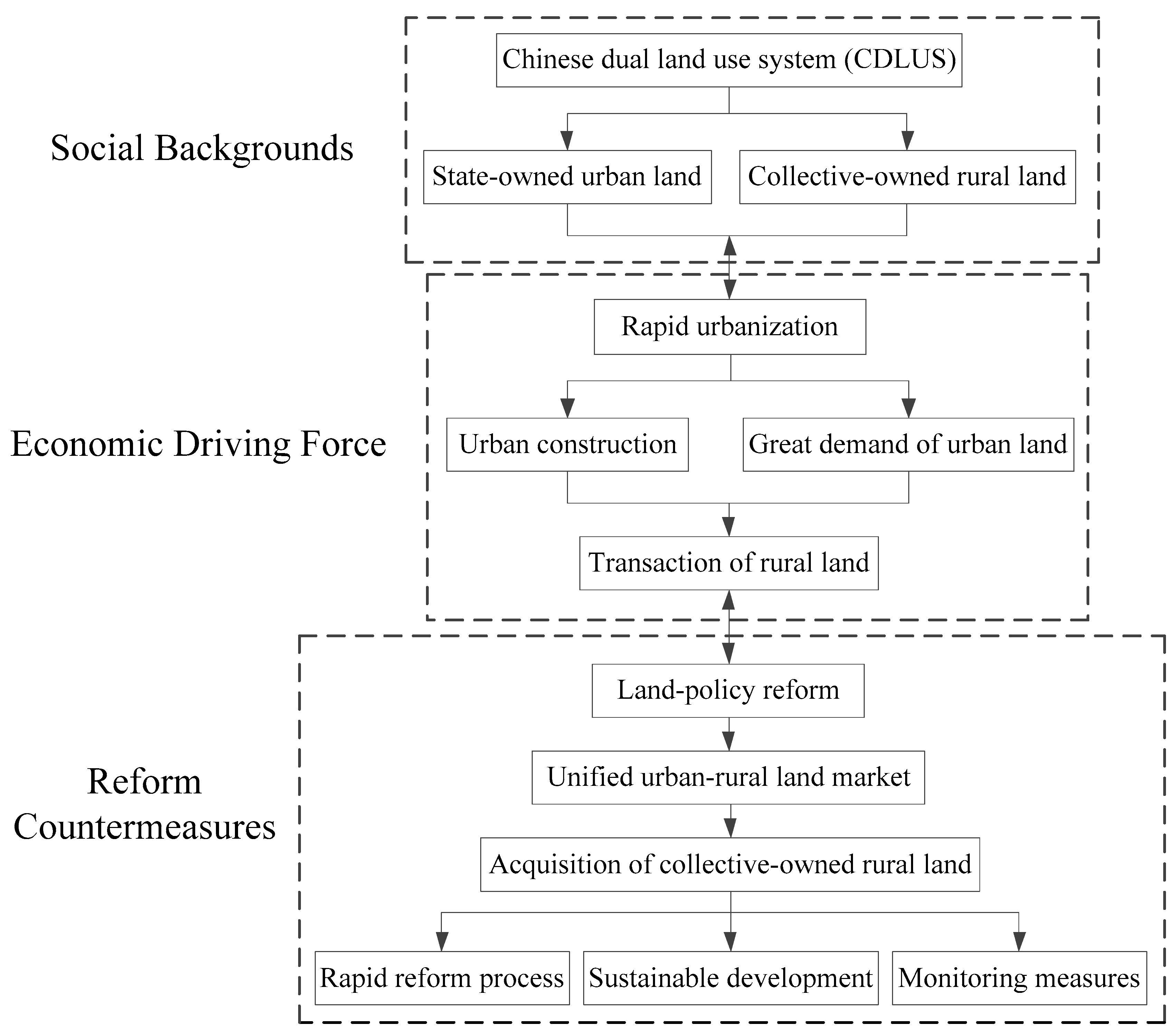Assessment of Social-Economic Risk of Chinese Dual Land Use System Using Fuzzy AHP
Abstract
:1. Introduction
2. The Dual Land Use System
2.1. Household Registration System in China
2.2. DLUS-Induced Problems
3. Methodology
3.1. Analytic Hierarchy Process
3.2. Fuzzy AHP
3.3. SEA Principles
4. Case Analyses with the Proposed Method
5. Risk Assessment
5.1. AHP Structure
5.2. Weight Calculation
5.3. Fuzzy AHP Method
5.4. Assessment Results
6. Discussion
6.1. Implications
6.2. Suggestions
7. Conclusions
- The assessment structure for social-economic risk was established with three indices and 11 sub-indices. The SEA principle was considered as sub-indices in the assessment structure. The AHP method is used to calculate the weights of assessment factors, while fuzzy AHP is used to assess the relative importance degree of the SEA principles. The integration of fuzzy AHP and SEA principles can give a qualitative assessment for social-economic risk in urban development.
- Assessment results show that the management system is the most important factor in urban development. For the six principles in SEA, the optimized relative importance degrees of the factors of sustainable development (A) and monitoring measures (E) are greater than other principles. Therefore, the principles of sustainable development and monitoring measures in SEA should be strictly implemented during urban development.
- In the future, it is recommended that the government establish a unified management system for both urban and rural areas that can ensure the effective implementation of sustainable urban development. The supervision capacity of government authorities to prevent unauthorized rooftop additions also needs to be strengthened. Mandatory regulations for construction projects in China, particularly for private self-constructed work undertaken on house-building sites in rural areas, should be strictly carried out.
Author Contributions
Funding
Conflicts of Interest
Appendix A. Supplement for the Calibration Formula in Context
- The weight of assessment factor in the judgment matrix can be calculated using Equation (A1).where wi is the weight coefficient of each factor; .
- The value of CR can be calculated using Equation (A2).where ; λmax is the largest eigenvalue of judgment matrix; n is the dimension of the judgment matrix.
- The normalized formula is as follows:where bij is the score of j plan to i factor and and are represent the minimum and maximum, respectively.
References
- Ding, C. Land policy reform in China: Assessment and prospects. Land Use Policy 2003, 20, 109–120. [Google Scholar] [CrossRef]
- Yang, X. Analysis on China’s urban-rural integration: The perspective of path-dependence. Open J. Soc. Sci. 2016, 4, 133–140. [Google Scholar] [CrossRef]
- The Central People’s Government of the People’s Republic of China (CPGPRC). Provisions on the Quality Supervision and Management of Housing Construction and Municipal Infrastructure Projects the Central People’s Government of the People’s Republic of China. No. 5; 2010. Available online: http://www.gov.cn/gzdt/2010-09/02/content_1694406.html (accessed on 23 April 2017). (In Chinese)
- Tan, Y.; Huang, R.; Kang, Z.; Bin, W. Covered semi-top-down excavation of subway station surrounded by closely spaced buildings in downtown Shanghai: Building response. J. Perform. Constr. Facil. ASCE 2016. [Google Scholar] [CrossRef]
- Shen, S.L.; Wu, Y.X.; Xu, Y.S.; Hino, T.; Wu, H.N. Evaluation of hydraulic parameters from pumping tests of multi-aquifers with vertical leakage Tianjin. Comput. Geotech. 2015, 68, 196–207. [Google Scholar] [CrossRef]
- Shen, S.L.; Wu, Y.X.; Misra, A. Calculation of head difference at two sides of a cut-off barrier during excavation dewatering. Comput. Geotech. 2017, 91, 192–202. [Google Scholar] [CrossRef]
- Lyu, H.M.; Sun, W.J.; Shen, S.L.; Arulrajah, A. Flood risk assessment in metro systems of mega-cities using a GIS-based modeling approach. Sci. Total Environ. 2018, 626, 1012–1025. [Google Scholar] [CrossRef] [PubMed]
- Lyu, H.M.; Shen, J.S.; Arulrajah, A. Assessment of geohazards and preventative countermeasures using AHP incorporated with GIS in Lanzhou, China. Sustainability 2018, 10, 304. [Google Scholar] [CrossRef]
- Shen, S.L.; Xu, Y.S. Numerical evaluation of land subsidence induced by groundwater pumping in Shanghai. Can. Geotech. J. 2011, 48, 1378–1392. [Google Scholar] [CrossRef]
- Shen, S.L.; Ma, L.; Xu, Y.S.; Yin, Z.Y. Interpretation of increased deformation rate in aquifer IV due to groundwater pumping in Shanghai. Can. Geotech. J. 2013, 50, 1129–1142. [Google Scholar] [CrossRef]
- Deng, J.L.; Shen, S.L.; Xu, Y.S. Investigation into pluvial flooding hazards caused by heavy rain and protection measures in Shanghai, China. Nat. Hazards 2016, 83, 1301–1320. [Google Scholar] [CrossRef]
- Lyu, H.M.; Wang, G.F.; Cheng, W.C.; Shen, S.L. Tornado hazards on June 23rd in Jiangsu Province, China: Preliminary investigation and analysis. Nat. Hazards 2017, 85, 597–604. [Google Scholar] [CrossRef]
- Lyu, H.M.; Wang, G.F.; Shen, J.S.; Lu, L.H.; Wang, G.Q. Analysis and GIS mapping of flooding hazards on 10 May 2016, Guangzhou, China. Water 2016, 8, 447. [Google Scholar] [CrossRef]
- Xu, Y.S.; Shen, S.L.; Ren, D.J.; Wu, H.N. Factor analysis of land subsidence in Shanghai: A view based on Strategic Environmental Assessment. Sustainability 2016, 8, 573. [Google Scholar] [CrossRef]
- Du, Y.J.; Jiang, N.J.; Liu, S.Y.; Jin, F.; Singh, D.N.; Puppala, A.J. Engineering properties and microstructural characteristics of cement-stabilized zinc-contaminated kaolin. Can. Geotech. J. 2014, 51, 289–302. [Google Scholar] [CrossRef]
- Shen, S.L.; Wang, J.P.; Wu, H.N.; Xu, Y.S. Evaluation of hydraulic conductivity for both marine and deltaic deposits based on piezocone testing. Ocean Eng. 2015, 110, 174–182. [Google Scholar] [CrossRef]
- Shepherd, A.; Ortolano, L. Strategic environmental assessment for sustainable urban development. Environ. Impact Assess. Rev. 1996, 16, 321–335. [Google Scholar] [CrossRef]
- Du, Y.J.; Yang, Y.L.; Fan, R.D.; Wang, F. Effects of phosphate dispersants on the liquid limit, sediment volume and apparent viscosity of clayey soil/calcium-bentonite slurry wall backfills. KSCE J. Civ. Eng. 2016, 20, 670–678. [Google Scholar] [CrossRef]
- Lyu, H.M.; Xu, Y.S.; Cheng, W.C.; Arulrajah, A. Flooding hazards across southern China and prospective sustainability measures. Sustainability 2018, 10, 1682. [Google Scholar] [CrossRef]
- Saaty, T.L. Decision Making with Dependence and Feedback: The Analytic Network Process; RWS Publication: Pittsburgh, PA, USA, 1996. [Google Scholar]
- Saaty, T.L. Decision making—The analytic hierarchy and network processes (AHP/ANP). J. Syst. Sci. Syst. Eng. 2004, 13, 1–35. [Google Scholar] [CrossRef]
- Saaty, T.L. Decision making with the analytic hierarchy process. Int. J. Serv. Sci. 2008, 1, 83–98. [Google Scholar] [CrossRef]
- Dağdeviren, M.; Yüksel, İ.; Kurt, M. A fuzzy analytic network process (ANP) model to identify faulty behavior risk (FBR) in work system. Saf. Sci. 2008, 46, 771–783. [Google Scholar] [CrossRef]
- Liu, H.C.; Liu, L.; Bian, Q.H.; Lin, Q.L.; Dong, N.; Xu, P.C. Failure mode and effects analysis using fuzzy evidential reasoning approach and grey theory. Expert Syst. Appl. 2011, 38, 4403–4415. [Google Scholar] [CrossRef]
- The Propriety Law of the People’s Republic of China. 2016. Available online: http://laodongfa.yjbys.com/xin/414131.html (accessed on 31 October 2016). (In Chinese).
- Decision on Collection of Collective-Owned Rural Land Parcel in Lucheng District. Office of Housing Management of Municipal Government in Lucheng District, Wenzhou City No. 18. 2013. Available online: http://www.lczsb.com/Art/Art_15/Art_15_412.aspx (accessed on 16 November 2016). (In Chinese).
- Detailed Rules for the Implementation of Encouraging Local Villagers Concede Homestead to the Rural Collective Economic Organizations. Decree of Shanghai Municipal People’s Government No. 16. 2003. Available online: http://www.teamlaw.cn/FCJZ/2674.html (accessed on 31 October 2016). (In Chinese).
- Principle of Suzhou Municipality on the Administration of Homestead. Decree of Suzhou Municipal People’s Government No. 66. 2003. Available online: http://www.chinalawedu.com/news/1200/22016.htm (accessed on 31 October 2016). (In Chinese).
- Tan, X.; Altrock, U. Struggling for an adaptive strategy? Discourse analysis of urban regeneration processes–A case study of Enning Road in Guangzhou City. Habitat Int. 2016, 56, 245–257. [Google Scholar] [CrossRef]
- Zhong, T.; Chen, Y.; Huang, X. Impact of land revenue on the urban land growth toward decreasing population density in Jiangsu Province, China. Habitat Int. 2016, 58, 34–41. [Google Scholar] [CrossRef]
- Lyu, H.M.; Cheng, W.C.; Shen, J.S.; Arulrajah, A. Investigation of collapsed building incidents on soft marine deposit: Both from social and technical perspectives. Land 2018, 7, 20. [Google Scholar] [CrossRef]
- Therivel, R. Systems of strategic environmental assessment. Environ. Impact Assess. Rev. 1993, 13, 145–168. [Google Scholar] [CrossRef]
- Noble, B.F. The Canadian experience with SEA and sustainability. Environ. Impact Assess. Rev. 2002, 22, 3–16. [Google Scholar] [CrossRef]
- Fischer, T.B. Strategic environmental assessment in post-modern times. Environ. Impact Assess. Rev. 2003, 23, 155–170. [Google Scholar] [CrossRef]
- Yin, Z.Y.; Zhu, Q.Y.; Yin, J.H.; Ni, Q. Stress relaxation coefficient and formulation for soft soils. Géotech. Lett. 2014, 4, 45–51. [Google Scholar] [CrossRef] [Green Version]
- Yin, Z.Y.; Jin, Y.F.; Shen, S.L.; Huang, H.W. An efficient optimization method for identifying parameters of soft structured clay by an enhanced genetic algorithm and elastic–viscoplastic model. Acta Geotech. 2016, 1–19. [Google Scholar] [CrossRef]
- Wu, H.N.; Shen, S.L.; Ma, L.; Yin, Z.Y.; Horpibulsuk, S. Evaluation of the strength increase of marine clay under staged embankment loading: A case study. Mar. Georesour. Geotechnol. 2015, 33, 532–541. [Google Scholar] [CrossRef]
- Xu, Y.S.; Shen, S.L.; Lai, Y.; Zhou, A.N. Design of Sponge City: Lessons learnt from an ancient drainage system in Ganzhou, China. J. Hydrol. 2018, 563, 900–908. [Google Scholar] [CrossRef]
- Ni, J.C.; Cheng, W.C. Monitoring and modeling grout efficiency of lifting structure in soft clay. Int. J. Geomech. 2010, 10, 223–229. [Google Scholar] [CrossRef]
- Hong, Z.S.; Zeng, L.L.; Cui, Y.J.; Cai, Y.Q.; Lin, C. Compression behaviour of natural and reconstituted clays. Géotechnique 2012, 62, 291–301. [Google Scholar] [CrossRef] [Green Version]
- Hong, Z.S.; Bian, X.; Cui, Y.J.; Gao, Y.F.; Zeng, L.L. Effect of initial water content on undrained shear behaviour of reconstituted clays. Géotechnique 2013, 63, 441–450. [Google Scholar] [CrossRef]
- Wu, Y.X.; Shen, S.L.; Yuan, D.J. Characteristics of dewatering induced drawdown curve under blocking effect of retaining wall in aquifer. J. Hydrol. 2016, 539, 554–566. [Google Scholar] [CrossRef]
- Wu, Y.X.; Shen, J.S.; Cheng, W.C.; Hino, T. Semi-analytical solution to pumping test data with barrier, wellbore storage, and partial penetration effects. Eng. Geol. 2017, 226, 44–51. [Google Scholar] [CrossRef]
- Yin, Z.Y.; Karstunen, M.; Chang, C.S.; Koskinen, M.; Lojander, M. Modeling time-dependent behavior of soft sensitive clay. J. Geotech. Geoenviron. Eng. 2011, 137, 1103–1113. [Google Scholar] [CrossRef]
- Yin, Z.Y.; Yin, J.H.; Huang, H.W. Rate-dependent and long-term yield stress and strength of soft Wenzhou marine clay: Experiments and modeling. Mar. Georesour. Geotechnol. 2015, 33, 79–91. [Google Scholar] [CrossRef]
- Yamin, L.E.; Hurtado, A.; Rincon, R.; Dorado, J.F.; Reyes, J.C. Probabilistic seismic vulnerability assessment of buildings in terms of economic losses. Eng. Struct. 2017, 138, 308–323. [Google Scholar] [CrossRef]
- Seitz, K.F.; Grabe, J. Three-dimensional topology optimization for geotechnical foundations in granular soil. Comput. Geotech. 2016, 80, 41–48. [Google Scholar] [CrossRef]
- Jin, Y.F.; Yin, Z.Y.; Shen, S.L.; Hicher, P.Y. Selection of sand models and identification of parameters using an enhanced genetic algorithm. Int. J. Numer. Anal. Methods Geomech. 2015, 40, 1219–1240. [Google Scholar] [CrossRef]
- Jin, Y.F.; Yin, Z.Y.; Shen, S.L.; Zhang, D.M. A new hybrid real-coded genetic algorithm and its application to parameters identification of soils. Inverse Probl. Sci. Eng. 2016. [Google Scholar] [CrossRef]
- Shen, S.L.; Wang, Z.F.; Yang, J.; Ho, E.C. Generalized approach for prediction of jet grout column diameter. J. Geotech. Geoenviron. Eng. 2013, 139, 2060–2069. [Google Scholar] [CrossRef]
- Shen, S.L.; Wang, Z.F.; Cheng, W.C. Estimation of lateral displacement induced by jet grouting in clayey soils. Geotech. ICE 2017, 67, 621–630. [Google Scholar] [CrossRef]
- Shen, S.L.; Cui, Q.L.; Ho, E.C.; Xu, Y.S. Ground response to multiple parallel microtunneling operations in cemented silty clay and sand. J. Geotech. Geoenviron. Eng. 2016, 142, 04016001. [Google Scholar] [CrossRef]
- Tang, Y. Urban land use in China: Policy issues and options. Land Use Policy 1989, 6, 53–63. [Google Scholar] [CrossRef]
- Wong, K.K.; Zhao, X.B. The influence of bureaucratic behavior on land apportionment in China: The informal process. Environ. Plan. C Gov. Policy 1999, 17, 113–125. [Google Scholar] [CrossRef]








| SEA | Index (Score Out of 10) | ||
|---|---|---|---|
| Technology Level | Dual Social System | Management System | |
| A (U32) | 5 | 7 | 9 |
| B (U23) | 3 | 8 | 7 |
| C (U24) | 4 | 3 | 4 |
| D (U33) | 6 | 4 | 5 |
| E (U31) | 6 | 3 | 9 |
| F (U34) | 5 | 3 | 8 |
© 2018 by the authors. Licensee MDPI, Basel, Switzerland. This article is an open access article distributed under the terms and conditions of the Creative Commons Attribution (CC BY) license (http://creativecommons.org/licenses/by/4.0/).
Share and Cite
Lyu, H.-M.; Wu, Y.-X.; Shen, J.S.; Zhou, A.-N. Assessment of Social-Economic Risk of Chinese Dual Land Use System Using Fuzzy AHP. Sustainability 2018, 10, 2451. https://doi.org/10.3390/su10072451
Lyu H-M, Wu Y-X, Shen JS, Zhou A-N. Assessment of Social-Economic Risk of Chinese Dual Land Use System Using Fuzzy AHP. Sustainability. 2018; 10(7):2451. https://doi.org/10.3390/su10072451
Chicago/Turabian StyleLyu, Hai-Min, Yong-Xia Wu, Jack Shuilong Shen, and An-Nan Zhou. 2018. "Assessment of Social-Economic Risk of Chinese Dual Land Use System Using Fuzzy AHP" Sustainability 10, no. 7: 2451. https://doi.org/10.3390/su10072451





